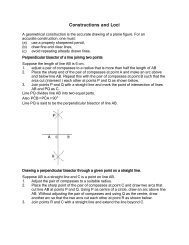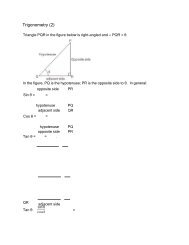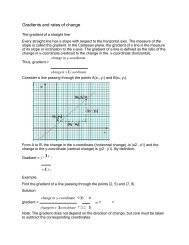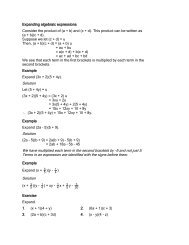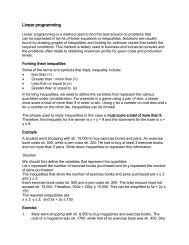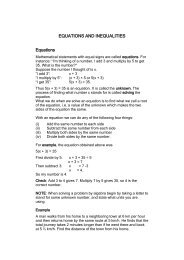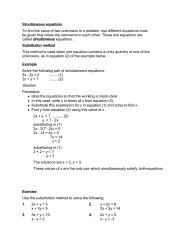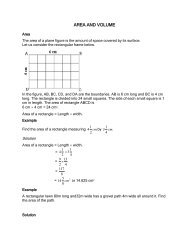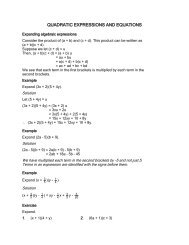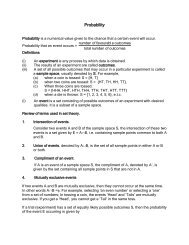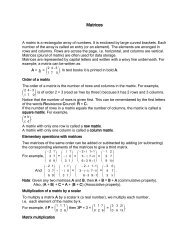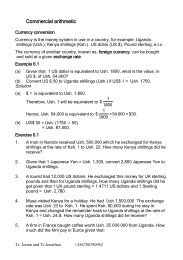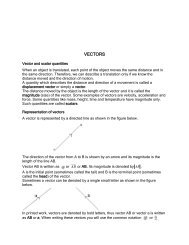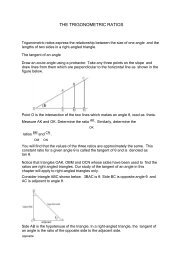J20
You also want an ePaper? Increase the reach of your titles
YUMPU automatically turns print PDFs into web optimized ePapers that Google loves.
Rotations<br />
A rotation is a transformation of an object about a fixed point such that every point in the<br />
object turns through the same angle relative to the fixed point.<br />
A rotation is described by the angle and the centre of rotation. An anticlockwise rotation<br />
is positive while a clockwise rotation is negative.<br />
When an object undergoes a rotation:<br />
(a) a point and its image are equidistant from the centre of rotation.<br />
(b) each point of an object moves along an arc of a circle whose centre is the centre<br />
of rotation.<br />
(c) only the centre of rotation remains fixed.<br />
(d) the perpendicular bisector of a line joining a point and its image passes through<br />
the centre of rotation.<br />
(e) the object and its image are directly congruent.<br />
Example<br />
A triangle has A(2, 2), B(2, 5) and C(4, 5) as its vertices. Find the coordinates of<br />
its image when rotated through 90 0 anticlockwise about the origin.<br />
Solution<br />
In order to find the coordinates of the image, join O to A to make line OA. From<br />
line OA measure an angle 90 0 and mark point A 1 such that OA = OA 1. Repeat this<br />
process with points B and C to get points B 1 and C 1. Join points A 1, B 1 and C 1 to get the<br />
image of triangle ABC. The coordinates of the vertices of the image are A 1(-2, 2), B 1(-5,<br />
2) and C 1(-5, 4).



